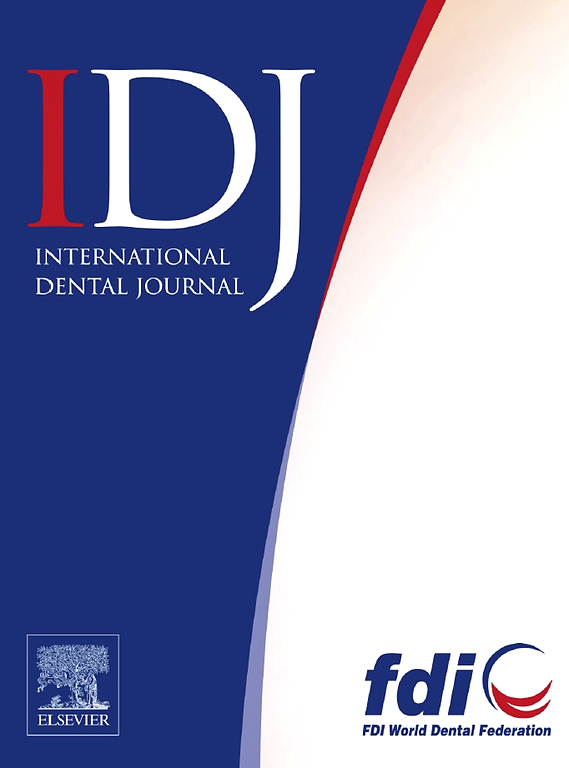通过转化gan解码牙周炎的表观遗传增强子-启动子相互作用:炎症基因调控和生物标志物发现的深度学习框架
IF 3.7
3区 医学
Q1 DENTISTRY, ORAL SURGERY & MEDICINE
引用次数: 0
摘要
牙周炎是一种慢性炎症性疾病,广泛的组织破坏和免疫反应失调是其特征。尽管增强子-启动子(E-P)相互作用在基因调控中起着至关重要的作用,但人们对它们如何影响牙周炎症的表观遗传调控知之甚少。通过结合DNA甲基化和基因表达数据,使用一种新的深度学习框架,本研究试图解码牙周炎中的E-P调控景观。方法研究匹配的全基因组DNA甲基化(GSE173081)和RNA-seq (GSE173078)数据集,包括甲基化差异、基因表达变化、相关指标和基因组距离等综合特征。变压器- gan通过训练作为二元分类器来区分正负增强子-启动子对来预测功能E-P相互作用。使用AUC-ROC和AUC-PRC分数来衡量模型的性能,而使用功能富集和网络拓扑分析来验证其生物学相关性。结果变压器- gan模型优于传统方法,具有较强的预测性能(AUC-ROC = 0.725, AUC-PRC = 0.723)。平均相关系数为0.62,基因组距离中位数为45.2 kb,共发现262个显著的E-P相互作用,涉及134个增强子和186个靶基因。多种增强子控制中枢炎症基因,如IL-1β、IL-6、IL-8和TNF,形成丰富免疫通路的网络枢纽,包括TNF、NF-κB和IL-17信号传导。通过综合多组学分析发现,增强子低甲基化、活性组蛋白标记和基因上调之间存在很强的相关性。有趣的是,E-P相互作用评分在预测治疗反应方面优于临床指标或基因表达(f1评分:0.82)。5种CpG生物标志物的诊断准确率在85% ~ 90%之间。结论:我们的整合转化- gan方法揭示了牙周炎中炎症基因表达的复杂增强-启动子调控网络。这些结果揭示了新的生物标志物和潜在的治疗靶点,同时强调了表观遗传调控在疾病发病机制中的重要性。本文章由计算机程序翻译,如有差异,请以英文原文为准。
Decoding Epigenetic Enhancer–Promoter Interactions in Periodontitis via Transformer-GAN: A Deep Learning Framework for Inflammatory Gene Regulation and Biomarker Discovery
Background
Widespread tissue destruction and dysregulated immune responses are hallmarks of periodontitis, a chronic inflammatory disease. Although enhancer–promoter (E–P) interactions play a crucial role in gene regulation, little is known about how they affect the epigenetic regulation of periodontal inflammation. By combining DNA methylation and gene expression data using a novel deep learning framework, this study sought to decode the E–P regulatory landscape in periodontitis.
Methods
We examined matched genome-wide DNA methylation (GSE173081) and RNA-seq (GSE173078) datasets with integrated features such as methylation differences, gene expression changes, correlation metrics and genomic distances. A Transformer-GAN forecasted functional E–P interactions by training as a binary classifier to differentiate positive and negative enhancer–promoter pairs. AUC-ROC and AUC-PRC scores were used to benchmark the model’s performance, while functional enrichment and network topology analyses were employed to validate its biological relevance.
Results
The Transformer-GAN model outperformed traditional methods, exhibiting strong predictive performance (AUC-ROC = 0.725, AUC-PRC = 0.723). With a mean correlation of 0.62 and a median genomic distance of 45.2 kb, we found 262 significant E–P interactions involving 134 enhancers and 186 target genes. Multiple enhancers controlled central inflammatory genes, such as IL-1β, IL-6, IL-8 and TNF, creating network hubs enriched in immune pathways, including TNF, NF-κB and IL-17 signalling. Strong correlations were found between enhancer hypomethylation, active histone marks and gene upregulation through integrative multi-omics analysis. Interestingly, E–P interaction scores outperformed clinical indices or gene expression in terms of predicting treatment response (F1-score: 0.82). The diagnostic accuracy of the five CpG biomarkers ranged from 85% to 90%.
Conclusion
Our integrative Transformer-GAN approach reveals a complex enhancer–promoter regulatory network underlying inflammatory gene expression in periodontitis. These results reveal new biomarkers and potential treatment targets while highlighting the significance of epigenetic regulation in disease pathogenesis.
求助全文
通过发布文献求助,成功后即可免费获取论文全文。
去求助
来源期刊

International dental journal
医学-牙科与口腔外科
CiteScore
4.80
自引率
6.10%
发文量
159
审稿时长
63 days
期刊介绍:
The International Dental Journal features peer-reviewed, scientific articles relevant to international oral health issues, as well as practical, informative articles aimed at clinicians.
 求助内容:
求助内容: 应助结果提醒方式:
应助结果提醒方式:


